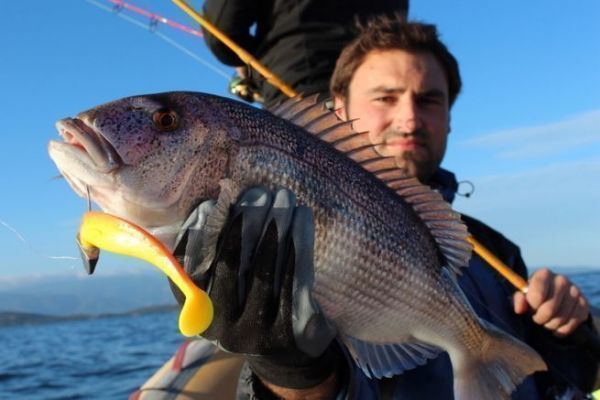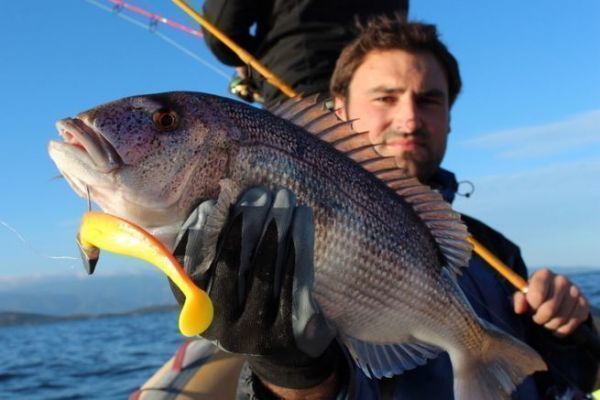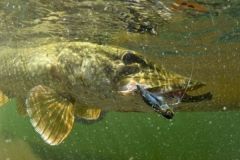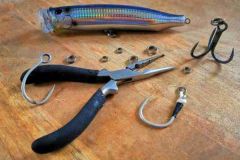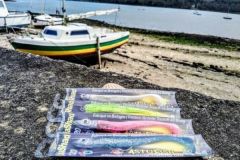Appropriate animations
Several animations work well. They can be adapted to suit the strength of the currents, the speed of the drift or the depth fished.
The most regular is the pull. We cast the lure against the drift, let it touch the bottom, then give it a wide, violent pull to the full extent of the rod. The lure saturates and vibrates hard, literally thrown off. We then let the lure regain contact with the bottom and so on until we reach the boat. This aggressive and inciting animation offers a subtle balance between a strong presence of the lure in the eyes of predators and a relatively imitative lure.
The other basic animation, when the fish are stuck to the bottom, apathetic, is to scrape the bottom behind the daggerboard. This perfectly imitates a rock fish moving nonchalantly close to the substrate.
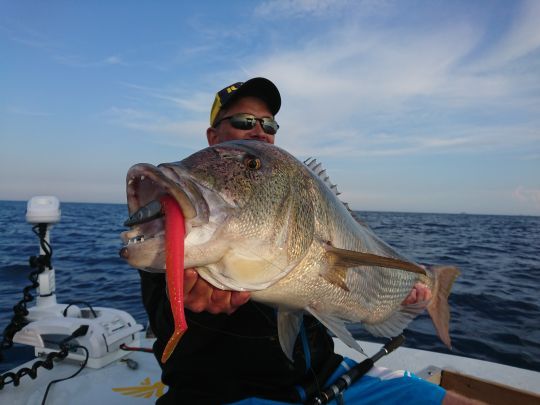
The touch can range from frank and violent to almost imperceptible... Sparid joy! And sometimes it's only when you see teeth marks on a soft lure that you realize it's been the victim of a sneak attack...
Be careful on the descent too. It's (really) not uncommon to get hits when the lure is sinking. You need to be attentive and keep a close eye on your braid. A graduated braid offers a better perception of bites when the line is slack.
When in doubt, strike hard! The denti has a very hard, relatively small mouth compared to the size of the predator. The fight is violent. There are lots of head-butts and fast, irregular rushes! Denti also have an annoying tendency to go for obstacles and rocks.

The right equipment
Most of the time, we use equipment that is considered light. Here again, this contrasts with the equipment used for trolling. A relatively long rod (at least 2.20 m) will enable you to cast far and pull hard without having to raise the rod at arm's length.
Rods should be well-made, fairly light and as sensitive as possible. The tip action must be strong, but the rod must bend easily to take the raging head strikes of the denti and the shock of the strike. I use the Illex Element Rider S 250 XH Rising Phoenix (20-100 gr) or the Illex Element Rider S 230 H Korrigan (15-80 gr) with great success.
Heavy casting equipment can also be used. Its use is anecdotal, but it offers a real plus for controlling the lure's descent and allows you to be more reactive in the event of a hit when the lure reaches the bottom.
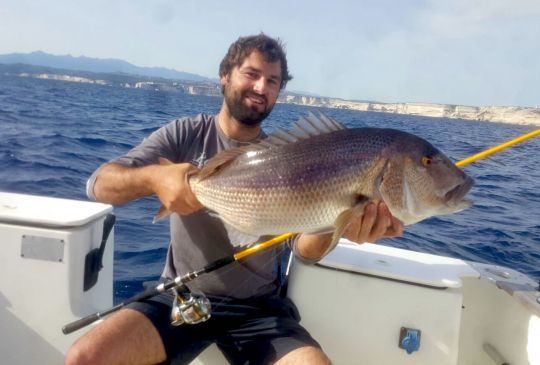
For balance, a reel in the 4000 to 5000 size range is more than sufficient. High ratios allow better line and banner management (especially for retrieving excess line after a pull) but are not essential. Intermediate or low ratios offer more torque when you need to reel in the fish with authority...
This reel must be fitted with PE1.2 to PE2 braid. A fine braid, ideally 8 strands, allows you to reach the bottom quickly as it splits the water better and also allows you to cast further. The braid allows you to feel the slightest touch and even to know the nature of the bottom (sand, rock, seagrass...). A graduated braid is a real plus for tracking the depth at which the lure is moving.
The leader is made from quality shock leader fluoro, with a strength of 16 to 25 lbs. The finer you fish, the more effective you'll be and the more bites you'll get! You'll often need a fairly long leader. Allow between 3 and 6 m of fluorocarbon depending on conditions.

Finally, an 8 kg denti is probably over thirty years old! It grows very slowly and is very vulnerable, especially to unscrupulous live fishermen. Release as many of your denti as possible whenever possible, and take every precaution when handling this magnificent predator!
